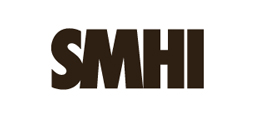The Swedish Meteorological and Hydrological Institute

| Short name: SMHI |
| JERICO-S3 contact name: Patrick Gorringe |
| JERICO-S3 email address: Please login or register to view contact information. |
| JERICO-DS contact name: Patrick Gorringe |
| JERICO-DS email address: Please login or register to view contact information. |
Brief Description of Organisation:
SMHI, the Swedish Meteorological and Hydrological Institute, is the Swedish governmental agency, under the Ministry of Environment, for meteorology, climate, hydrology and oceanography. SMHI operates national observational networks and data management systems for the atmosphere, rivers and lakes, and the seas in areas of interest for Sweden. The national observations are supplemented by an extensive international data exchange. SMHI operates oceanographic buoys in the Baltic and the Skagerrak-Kattegat seas, some in cooperation with Swedish universities and a FerryBox system on the route Lubeck-Uleåborg-Kemi-Lübeck. As part of the Swedish national marine environmental monitoring program monthly oceanographic cruises are carried out. SMHI runs daily operational meteorological, hydrological and oceanographic forecast models. The forecasts are disseminated to the public and to national and international clients. SMHI also operates the Baltic Algae Watch System, which is based on satellite remote sensing of cyanobacteria blooms. SMHI is Sweden’s National Oceanographic Data Centre within the IOC’s IODE network and within HELCOM, OSPAR and EU-projects. SMHI hosts the Swedish IOC-secretariat, and is also participating actively in the Global Ocean Observing System, i.e. EuroGOOS, BOOS and NOOS. The RTD staff has almost 100 full-time scientists. The RTD divisions support the institute with research and development of new production tools, this also includes involvement in many national and international research projects.
JERICO-S3: Main tasks attributed under Work Packages:
WP3, As lead for WG-KS involved in Task 3.2. Development of regional IRS strategy and business and sustainability plans, Task 3.3. Integration and harmonization within and between regions and Task 3.4. Regional data harmonization/delivery and products.
WP5, Lead 5.2 Best Practices for Pilot observing technologies, Contributing to Subtask 5.2.2 Community and environmental DNA based procedures for coastal monitoring and Subtask 5.2.3 Biological automatised sensors
WP6, Lead subtask 6.2.1: Identify and update the overview of JERICO-RI involved platforms and data, contribute to subtask 6.2.2: Activities on selected platforms with physical and BGC parameters, subtask, 6.3.1: Biological imagery data and Subtask 6.3.2: Use of biological sensors for acquiring diversity and functionality data of the phytoplankton communities.
WP7, contribute to task 7.3, Enabling data science from innovative observation services and systems
and in particular Subtask 7.3.1 State of the art report on data science methodologies, Subtask 7.3.2 Data science methodologies definition and implementation, Subtask 7.3.3: Intelligent services to be integrated in JIIM
and Subtask 7.3.4: Intelligent services Virtual Research Environment (VRE) integration.
JERICO-DS: Main tasks attributed under Work Packages:
WP3: co-leader of the design of the JERICO e-infrastructure. Involvement in WP1, WP2, WP4, WP5, WP6 as nation representative.
JERICO-NEXT: Main tasks attributed under Work Packages:
WP1 SMHI will provide expertise in general with a focus on biological oceanographic processes WP2 SMHI will contribute with experiences from operating the swedish oceanographic buoys, a FerryBox system and with biological, chemical and physical oceanographic data for harmonisation of methods etc.
WP3 SMHI will develop automated plankton analyses and sampling systems, HF radar for current and wave measurements. WP4 SMHI will lead the Joint Research Project on Pelagic biodiversity and also contribute to work on HF radar, carbon flow and the carbonate system. WP5 SMHI will lead the task on developing quality control systems for chemical oceanographic data and develop a road map for a system for managing FerryBox data on a European level.
Relevant Projects- previous and existing:
HABES Harmful Algal Bloom Expert System, HABILE Harmful Algal Bloom initiation in Large European Ecosystems, JERICO/JERICO-NEXT, Copernicus, ECOSUPPORT, SeaDataNet/SeaDataCloud, EMODnet, in particular Physics, Biology and Chemistry, Interreg IVA, Saracus – Using satellite data and coastal HF radar to map and validate sea surface currents and to detect ships in Skagerrak, 2013-2014, Swedish Space Agency, Project on ocean acidification funded by Swedish Environmental Protection Agency, Estimating nitrogen fixation in past and future climates of the Baltic Sea (funded by Swedish Research Council), Lifewatch Sweden (funded by the Swedish Research Council), Project on data assimilation funded by the Swedish Space Agency. Several smaller projects for HELCOM and OSPAR on commission for the Swedish Agency for Marine and Water Management.
The Swedish Meteorological and Hydrological Institute
Folkborgsvaegen 1
601 76, Norrkoeping
Sweden
